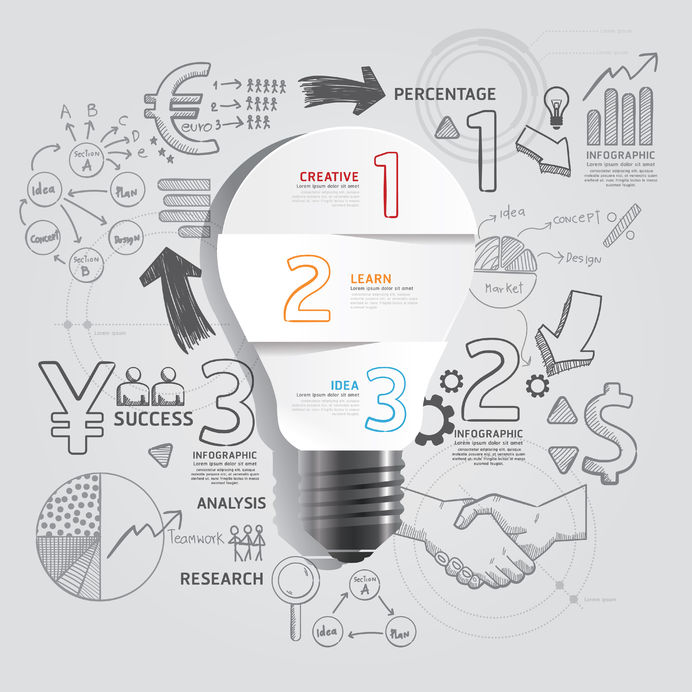07
September
2016
Three Key Principles Innovation Marketers Can Take from the Design World
What do a phone, a car service, and a vacuum cleaner have in common? The best innovators in these categories applied design thinking principles to create success stories.
Apple, Uber and Dyson are not alone; numerous companies have applied design thinking principles and processes to new product or service innovation – some with considerable success, others… not so much. At Clarteza we’ve been involved in a number of design-led innovation projects in the consumer packaged goods industry and have observed several key success elements that can be borrowed from design thinking to drive better and more sustainable innovations.
- Be user-immersed
“You can’t just ask customers what they want and then try to give it to them. By the time you get it built, they’ll want something new.” (Steve Jobs)
Clearly defining the problem to be solved from a user behavior standpoint is critical. To do this, behavior and observation-based tools are often more successful than traditional qualitative or survey based research as consumers don’t always know what they need, and even more often, can’t verbalize it.
To this end, there are several frameworks and tools that can help innovators deeply understand and accurately define the problem to be solved. These tools can include in-home ethnography, the “jobs to be done” framework, or observational research. Each is deeply grounded in the consumer, in behavior (rather than attitudes or claims), and is focused on generating a deep empathetic understanding of true consumer needs and associated barriers.
2. Be iterative.
“Prototyping at work is giving form to an idea, allowing us to learn from it, evaluate it against others, and improve upon it.” (Tim Brown, CEO of IDEO)
Successful innovation processes have built in re-loops. At the beginning, restating the problem based on deep consumer understanding can be the unlock for innovative new solutions. One team evolved their job to be done three times during the process before they redefined the problem in a new way which unlocked a truly innovative new solution pathway. Continuing to ask the question, “Are we solving the real consumer problem and associated barriers?” is a powerful means to drive innovative thinking.
Then, as early idea development and prototyping occurs, successful teams often do iterative small scale user testing to provide direction throughout the development process. We’ve found that a combination of static ongoing consumer use panel feedback as well as fresh naïve consumers can often be a great combination. The ongoing feedback group can provide iterative input based on exposure to earlier flawed prototypes and resulting solutions, while the fresh consumers can identify opportunities that occur on that critical first use occasion.
3. Be experimental.
“Failure is an enigma. You worry about it and it teaches you something.” (James Dyson, British inventor)
Fail early; test to learn, not to screen. With stagegate processes and narrowing funnels, manufacturers are oriented to screening out bad ideas or products. We need to get better at learning from what doesn’t work to drive successful next generation product ideas and prototypes and avoid throwing out the baby with the bathwater. Iterative small scale testing of early ideas or prototypes is a key to taking corrective action more quickly and cheaply. This often means using early stage concept ideas or prototypes and more exploratory approaches, rather than waiting to have more fine-tuned options late in the process which can lead to bad news at the validation stage.
Testing to learn is a powerful philosophical shift for many marketers…from an “is it ready?” mindset to a “what can we learn to make it better” curiosity. A simple enabler to inoculate teams in this thinking is to do a cross-functional post research debrief that focusses on what was learned, what worked, and what needs to be addressed.
Final thoughts…
In a way, design thinking is a lot like the marriage of science and art, the functional and the beautiful, the left brain and the right brain. It injects the innovation process with careful discipline and creative curiosity, to set the stage for ingenuity. At Clarteza, design thinking is an integral part of our DNA – it fuels our internal team dynamic and our client collaboration, incorporating the end user’s needs (whether it be colleague, client, or consumer) into every aspect of the process. After all, it requires innovative thinking to have innovative ideas, or, as Albert Einstein said, “We can’t solve problems by using the same kind of thinking we used when we created them.”
This article was first published by American Marketing Association and was a result of a team effort!
TAGS: American Marketing Association, creativity, design thinking, innovation, Innovation Process // POSTED IN: Design Thinking, Innovation Process // COMMENTS: Comments Off on Three Key Principles Innovation Marketers Can Take from the Design World
